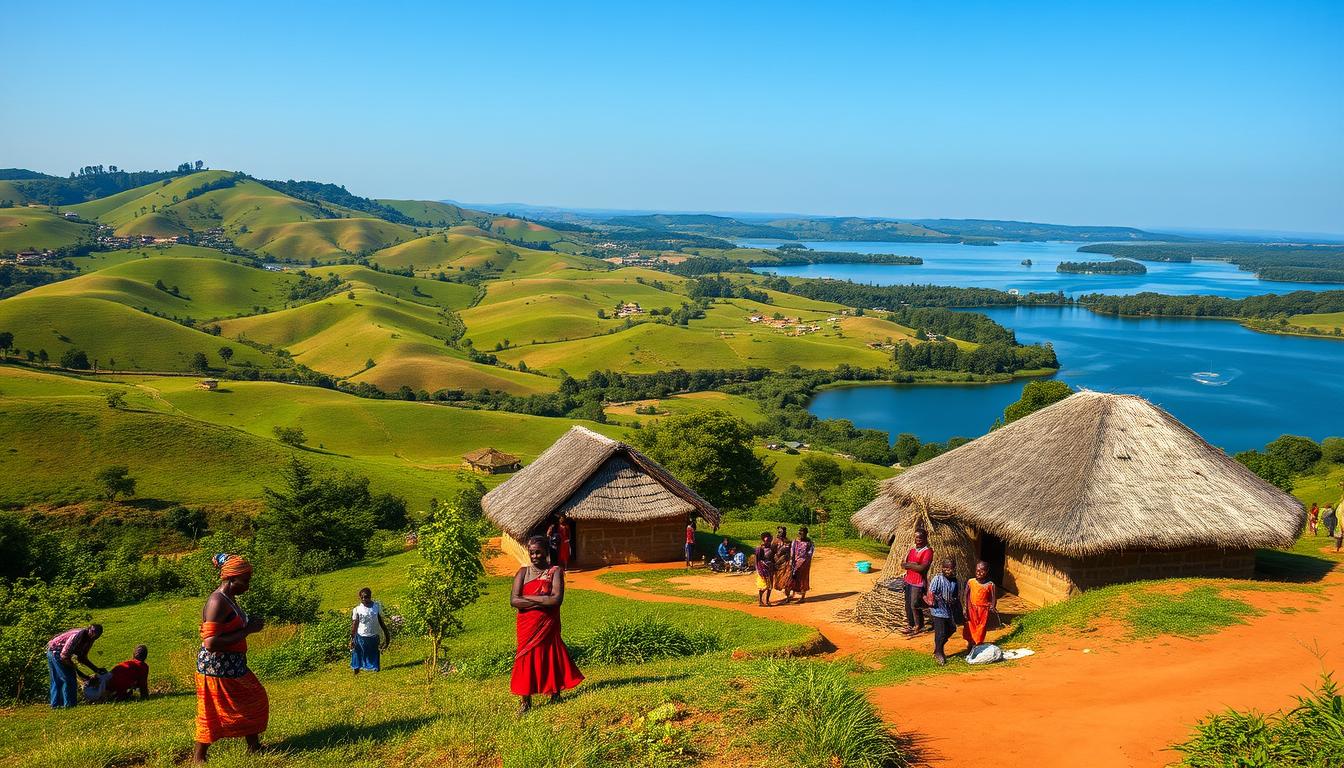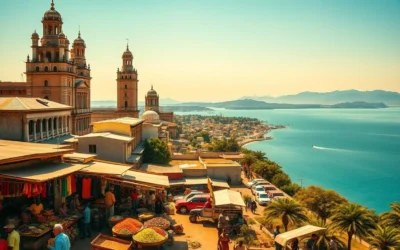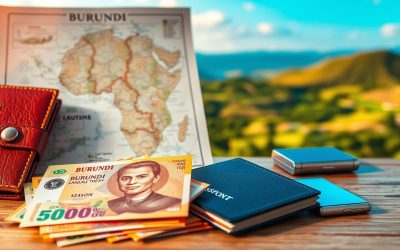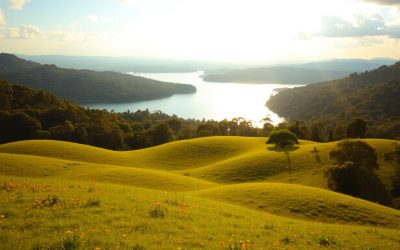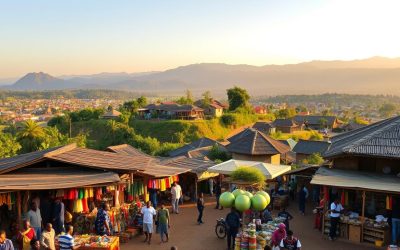Ever thought about how a small East African nation handles its many languages? In Burundi, languages show the country’s culture, history, and unity.
The country’s language mix is interesting. It has indigenous and colonial languages. Official languages like Kirundi, French, and English show its history and global ties.
Kirundi is the main language, spoken by 98% of people. It connects Hutu and Tutsi communities, showing national unity.
French, from Belgian rule, is still official but spoken by only 3-10% of Burundians. English, the newest official language, shows the country’s growing role in the world.
Key Takeaways
- Kirundi is the primary language for 95% of Burundian households
- Three official languages: Kirundi, French, and English
- Swahili plays a significant role in commerce
- Language diversity reflects Burundi’s complex historical journey
- 98% of the population speaks Kirundi
Language Diversity in Burundi Today
Burundi has a unique mix of languages that stands out in Africa. The country is very homogeneous, with most people speaking one main indigenous language. This shows how language and culture are closely tied in Burundi.
- Kirundi is the main language, spoken by 98.1% of people
- Official languages are Kirundi and French
- Other languages include Swahili and English
Current Official Languages Status
The 2005 Constitution made Kirundi and French the official languages. This choice shows Burundi’s history and culture. It also keeps indigenous languages important.
Role of Indigenous Languages
Indigenous languages are key to keeping culture alive. Kirundi is especially important for talking within families and communities. Studies show 95% of parents speak Kirundi at home, showing its value.
Modern Language Distribution
In Burundi, most people speak Kirundi. French, Swahili, and English are used less:
- French: 0.3% of population
- Swahili: 0.2% of population
- English: 0.1% of population
“Language is the roadmap of a culture. It tells you where its people come from and where they are going.” – Rita Mae Brown
Kirundi: The National Language of Unity
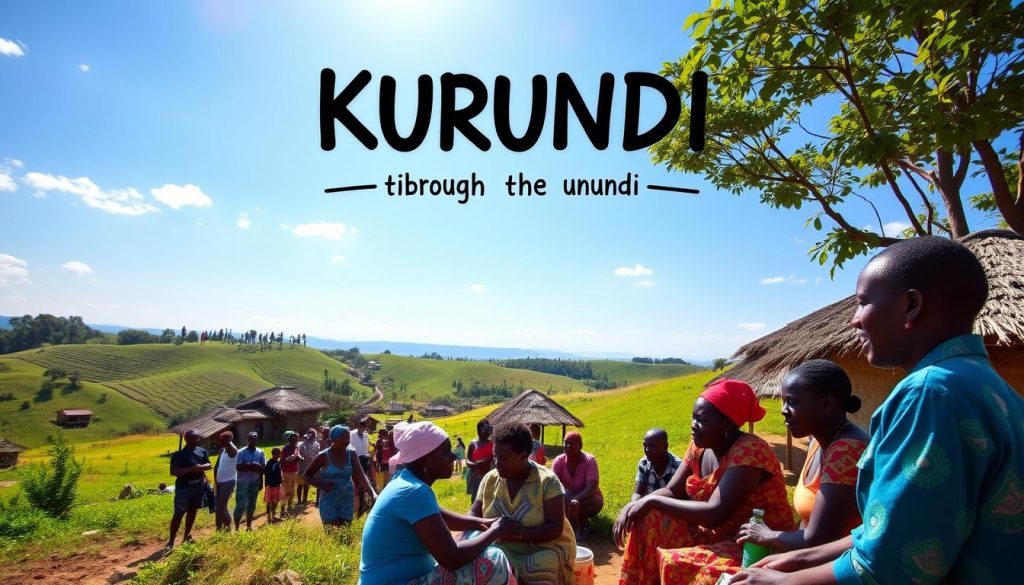
Kirundi is at the heart of Burundian identity, bringing together different ethnic groups. The 2005 constitution made it the national language. It’s more than just a way to talk; it’s a symbol of unity and culture.
Kirundi is important for more than just talking. It connects people from different backgrounds. This is especially true in a country with a history of social divisions.
“Language is the road map of a culture. It tells you where its people come from and where they are going.” – Rita Mae Brown
Here are some key facts about Kirundi:
- Spoken by about 85% of Burundi’s 12 million people
- Officially recognized as a national language for unity
- Used as the main language in primary schools
- Key for communication between different ethnic groups
The government’s language policy shows a smart way to bring people together. By focusing on Kirundi, they help everyone understand and respect each other’s culture.
| Language Metric | Statistics |
|---|---|
| Total Speakers | 10.2 million |
| Percentage of Population | 85% |
| Official Status | National Language |
| Primary Education Medium | Primary Instruction Language |
Learning Kirundi gives you a peek into Burundian culture. It might have tough sounds, but it’s not too hard. English speakers can get the basics in about six months.
Knowing Kirundi means you get Burundi. It’s a language full of the nation’s dreams, struggles, and goals.
French Language Influence and Usage
In Burundi, French has a complex history tied to colonial times. It’s a key part of the country’s mix of languages. French shapes how people talk, govern, and interact socially.
Colonial Legacy Impact
The Belgian colonial era greatly influenced Burundi’s language scene. French became a major language for administration and elite talks. Even though only 8.50% of people speak it fluently, its impact is big.
- Introduced during Belgian colonial rule
- Retained as an official language post-independence
- Symbolizes historical administrative infrastructure
French in Education and Government
French plays a big role in Burundi’s language policy, especially in schools and government. It’s used in official documents, higher education, and professional settings. This creates a language hierarchy that goes beyond everyday talk.
| Sector | French Usage |
|---|---|
| Government | Primary administrative language |
| Education | Medium of instruction in universities |
| Professional Settings | Preferred communication language |
Vernacular French Variations
Burundian French shows unique creativity. Local speakers mix loanwords from Kirundi and other languages. This creates a special dialect that shows the nation’s rich language mix.
“Language is the road map of a culture. It tells you where its people come from and where they are going.” – Rita Mae Brown
Even though French is a minority language, it’s very important in Burundi. Understanding this shows how colonial history and modern identity mix.
English as the Newest Official Language
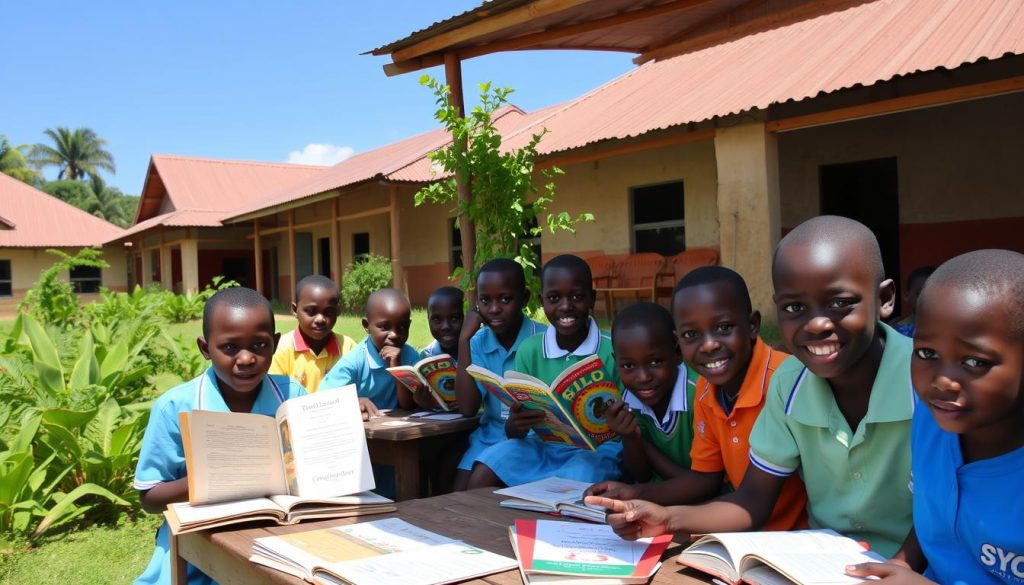
In 2014, Burundi took a big step by making English its third official language. This move was part of the country’s efforts to join the East African Community (EAC). It changed how people communicate in Burundi.
By adopting English, Burundi showed it wants to be more involved in the region. Even though English is now official, it’s still a new language in the country. It brings both challenges and chances for growth.
“English opens doors to international communication and economic opportunities” – Burundian Language Policy Experts
Here are some key facts about English in Burundi:
- Less than 5% of Burundians spoke English well in 2010
- English classes started in primary schools in 2005-2006
- More officials are now looking for English language training
But, there are still hurdles to overcome:
- 90% of international scholarships were lost because of English requirements
- Businesses in Burundi often need English translators
- Professionals find it hard to publish abroad because of English barriers
The government is working to solve these problems. In October 2014, a program was started. It aimed to teach basic English to 104 officials in the Ministry of Finance and Economic Development Planning.
| Language Metric | English Adoption Status |
|---|---|
| Official Language Status | Third Official Language (2014) |
| Fluency Rate | Less than 5% |
| Primary School Introduction | 2005-2006 Academic Year |
As Burundi gets closer to the East African Community, English will become more important. It will play a big role in the country’s growth and talking to the world.
Swahili’s Role in Commerce and Trade
Swahili is key in Burundi’s business world. It acts as a bridge for communication across East Africa. This language helps traders and businesses connect, making economic talks smoother.
Its importance in trade comes from its wide use in the Great Lakes area. Burundian traders use Swahili to talk to partners from other countries. This helps overcome language barriers that might block trade.
- Swahili serves as a lingua franca for business communication
- Enables trade connections across East African Community members
- Particularly important for Muslim communities and immigrant populations
Looking at language demographics shows Swahili’s big role. It has about 5.3 million native speakers and 92 million who speak it as a second language. This makes it a powerful tool for communication.
| Language Metric | Swahili Speaker Statistics |
|---|---|
| Native Speakers | 5.3 million (2019-2023) |
| Second Language Speakers | 92 million (2019-2021) |
| Total Estimated Speakers | Between 60-200 million |
“Swahili is more than a language; it’s a bridge connecting cultures and economies in East Africa.” – Regional Trade Analyst
In Burundi’s cities, Swahili’s business power is clear. Traders use it to talk, build business ties, and grow their networks. This helps them reach out to different language groups.
Language Education and Literacy
Burundi’s language education shows its rich multilingual heritage. Understanding the country’s language journey is key. It reveals a complex system of language policies that shape education and literacy.
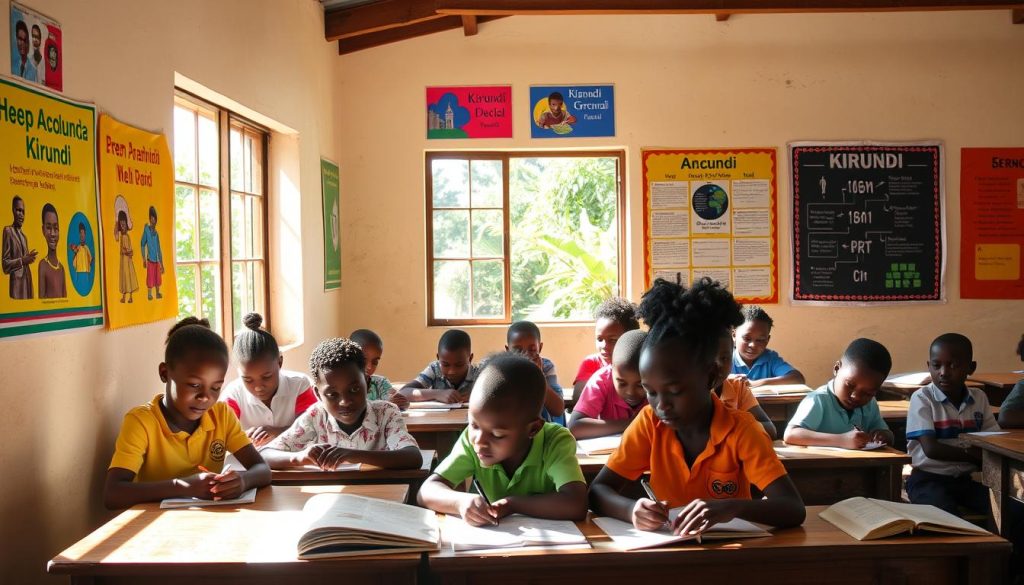
The language policy in Burundi is complex. It values indigenous languages a lot. This ensures linguistic diversity is preserved in education.
School System Language Policies
Burundi’s schools use many languages to improve learning. The system focuses on:
- Kirundi as the main language in early education
- French as a key secondary language
- English becoming more important in schools
Adult Language Education Programs
Adult literacy programs aim to boost language skills. They target different groups. The goals are to:
- Enhance multilingual communication
- Offer vocational language training
- Help with economic growth through language skills
Literacy Rates by Language
| Language | Literacy Rate | Population Coverage |
|---|---|---|
| Kirundi | 75% | Primary Native Language |
| French | 62% | Secondary Official Language |
| English | 35% | Emerging Language |
The literacy rates show big differences between languages. Knowing these details helps grasp Burundi’s linguistic complexity.
Language is the roadmap of a culture. It tells you where its people come from and where they are going. – Rita Mae Brown
Cultural Impact of Multilingualism
Burundi’s language scene is a colorful mix of cultures. It shows how different languages shape our social lives, arts, and who we are as a nation.
Being multilingual in Burundi does more than just help us talk. It shows a mix of languages that tell the country’s deep history.
- Kirundi connects people through shared cultural roots
- French bridges colonial history with modern communication
- Swahili facilitates regional trade and interactions
“Languages are the roadmaps of a culture. They tell you where its people come from and where they are going.” – Rita Mae Brown
In Burundi, different languages lead to interesting social scenes. People from various language groups come together, creating a rich mix of arts, music, and stories. Students and workers use many languages every day, showing off their great communication skills.
Groups like Tutsi, Hutu, and Twa add to the language mix, each with their own special way of speaking. This mix of languages helps people understand each other better and brings communities closer.
Looking into Burundi’s language world shows us that languages are more than just a way to talk. They are living parts of our culture that connect us across time and space.
Language Evolution and Future Trends
Burundi’s language scene is changing fast. Digital tech, efforts to save languages, and global trends are all playing a part. We need to look closely at what’s coming next for language diversity.
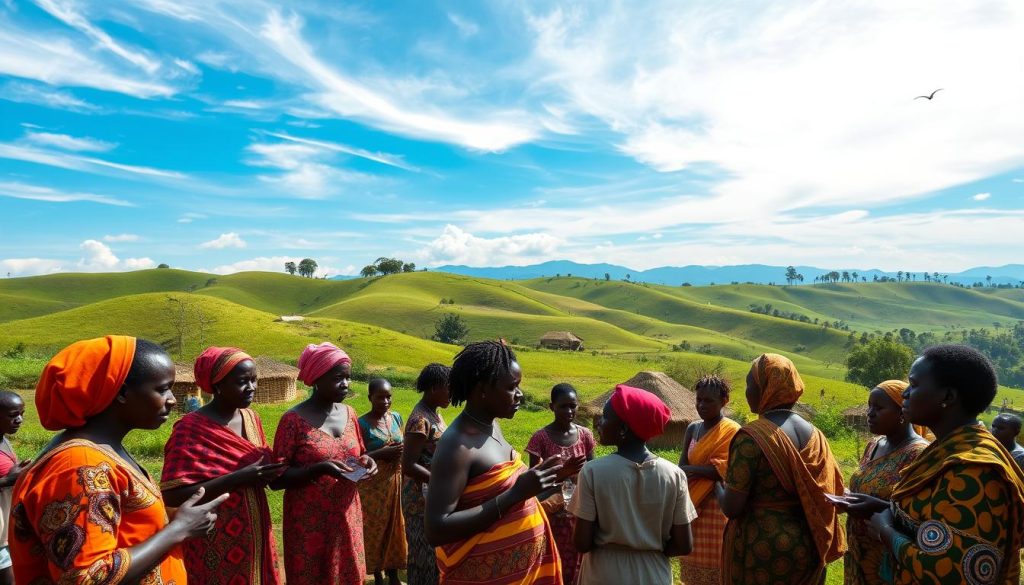
Digital Language Usage
Digital tools are changing how people talk in Burundi. Smartphones and the internet are opening up new ways for young people to use their languages. This is helping to keep indigenous languages alive.
- Mobile technology enabling multilingual communication
- Social media platforms supporting local language content
- Digital translation tools expanding linguistic accessibility
Language Preservation Efforts
Language is very important in Burundi. The government and other groups are working hard to save and celebrate local languages. They are documenting and bringing back languages that are at risk.
- Documenting rare language variations
- Creating digital archives of indigenous speech
- Developing educational resources in local languages
Future Language Projections
The future of languages in Burundi looks complex. It will mix global and local needs. There’s hope for a comeback of indigenous languages, thanks to tech and cultural pride.
“Languages are living entities that adapt, evolve, and reflect the dynamic nature of human communication.” – Language Preservation Expert
Burundi is leading the way in saving languages. It’s using new tech while keeping its traditional language roots strong.
Urban vs Rural Language Usage
Burundi’s language use shows interesting differences between cities and countryside. The country’s Language Demographics show a mix of communication styles. These styles change a lot between city and country.
In cities like Bujumbura, Gitega, and Muyinga, many languages meet and change. These places are where languages blend and grow. Cities have more people speaking many languages than rural areas.
- Urban centers feature more complex language interactions
- Rural areas maintain stronger traditional language practices
- Economic opportunities drive language adaptation in cities
Education is key in how languages are used. People in cities get more chances to learn new languages. They often learn Kirundi, French, and English.
| Language Context | Urban Characteristics | Rural Characteristics |
|---|---|---|
| Primary Communication | Multiple language use | Primarily local languages |
| Language Exposure | Diverse linguistic interactions | Limited language variations |
| Educational Influence | Higher language learning opportunities | Traditional language preservation |
Rural areas keep traditional languages alive. Kirundi is the main language spoken. These places stick to old ways of speaking, keeping cultural ties strong.
“Language is the roadmap of a culture. It tells you where its people come from and where they are going.” – Rita Mae Brown
Looking at how people speak in cities and countryside gives us a peek into Burundi’s culture and communication.
Conclusion
Your journey through Burundi’s linguistic world shows a complex and vibrant communication system. With 12.3 million people, this East African nation has a lot of language diversity. Kirundi is the main language people use to connect.
In homes, Kirundi is the language most used, by over 90% of the population. This shows how important it is in family life.
Official languages in Burundi show both old and new influences. French and Kirundi are the main official languages. English is also important, especially for jobs and education.
The East African Community’s goals have made English more common. This helps Burundian graduates compete worldwide.
Burundi’s languages are more than just a way to talk. They show the nation’s cultural strength. Even through tough times, the languages have helped keep communities together.
Understanding these languages gives us a peek into Burundi’s social life. It’s a country with a rich culture.
As Burundi grows, its many languages will help a lot. They will support the economy, help with regional work, and keep culture alive. The mix of Kirundi, French, English, and Kiswahili looks bright for this nation.
The above is subject to change.
Check back often to TRAVEL.COM for the latest travel tips and deals.
Here are some Tours & Sightseeing suggestions that might pique your interests!
